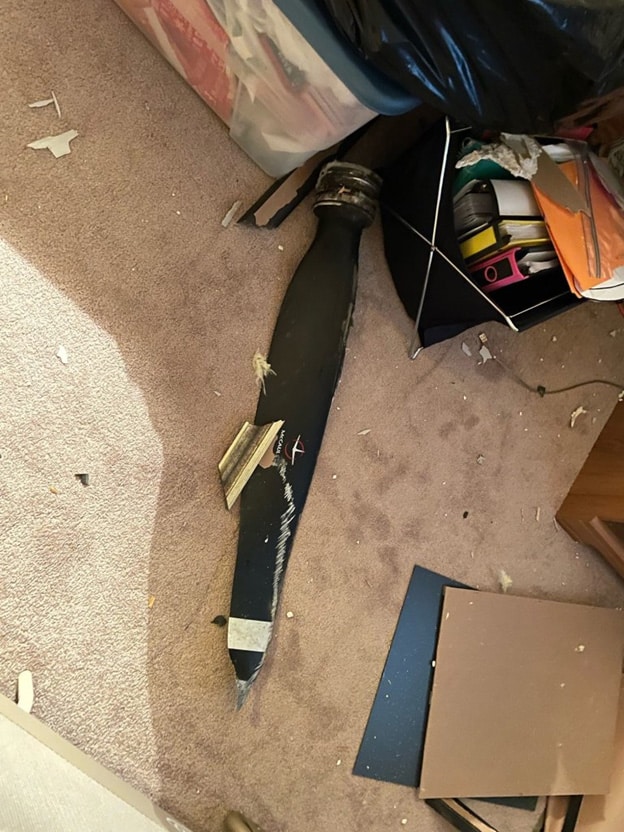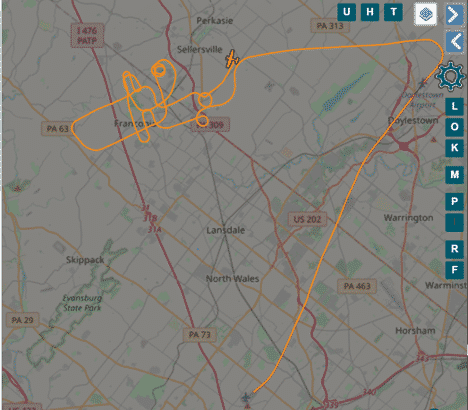MODIFIED BONANZA CRASH IN PERKASIE SHOWS UNMISTAKABLE SIGNS OF POSSIBLE ENGINE POWER LOSS AND AN INADVERTENT SPIN THAT AIRFRAME MODIFICATIONS MAY HAVE MADE RECOVERY IMPOSSIBLE OR DELAYED
MODIFIED BONANZA CRASH IN PERKASIE SHOWS UNMISTAKABLE SIGNS OF POSSIBLE ENGINE POWER LOSS AND AN INADVERTENT SPIN THAT AIRFRAME MODIFICATIONS MAY HAVE MADE RECOVERY IMPOSSIBLE OR DELAYED
This Beech F-33 Bonanza crash shows an unmistakable sign of pre-existing engine failure.
One of the propeller blades was thrown free of the wreckage and is straight with no bends curls. Curls like a pretzel always occur when the engine is running at impact. Video of the crash reveals signs of engine power then interruption and then power. The propeller blade image is reproduced here. The blade is almost pristine confirming no power at impact.
The intense fire confirms there was plenty of fuel aboard.
The aircraft had just completed training maneuvers as confirmed by the FlightAware tracks below. It appears that the aircraft’s owner Brian Filippini was training for a commercial pilots’ license, as he was already a licensed private pilot, when the aircraft went down with his flight instructor Alfred Piranian.
Other than engine failure and inadvertent spin nothing explains the dynamics of this crash. The video shows the aircraft in a steep dive and maybe even a spin or just about a recovery from a spin before impacting the ground at high speed.
I owned a Beech Bonanza and flew it for five years accumulating more than 700 hours as pilot-in-command. I had nothing but trouble with the engine. Engine failure or loss of power in this model is no surprise to me.
This airplane a Be33 was a 285-horsepower version of the straight tail Debonair only later called a Bonanza not to be confused with the V-Tail versions. For two years, this aircraft was certified in the aerobatic category but the accident airplane was not an aerobatic certified airplane.
Review of the maintenance history however revealed several modifications that may have adversely affected the stall and spin recovery ability of this aircraft. The first was a wing tip mod that came out to accommodate strobe lights. The second was the introduction of a 100 lb. T.K.S. modification.
The fluid tank and pumps were aft of the CG and outboard. The pendulum effect from such additional equipment, called the polar moment of inertia, could easily have aggravated the stall and exacerbated the spin and made it more difficult to recover. There was also the T.K.S. leading-edge modification that to some extent changed the airflow and stall characteristics.
What is most offensive about this model Beech aircraft and others Beech produced for decades is the manner in which it ran fuel lines across and below the cabin so that even a survivable crash landing becomes a conflagration. This is a clear violation of the regulations under which the F-33 Bonanza was certified, CAR 3, but of course the FAA has done nothing about it.
The aircraft had recent maintenance on its engine which will have to be investigated and a previous annual inspection. If T.K.S. changes the flight characteristics during flight the aircraft cannot be signed off as airworthy.
The Filippini and Piranian families have suffered a terrible tragedy. The NTSB will bring the aircraft manufacturer to the investigation as a party to the investigation. That long-ago discredited procedure will unlikely find the cause of this accident.
The Wolk Law Firm certainly will find the actual cause of this accident.
May the memories of those who have lost their lives be a blessing!
Arthur Alan Wolk
3/20/22
 For more commentaries click here.
For more commentaries click here.


